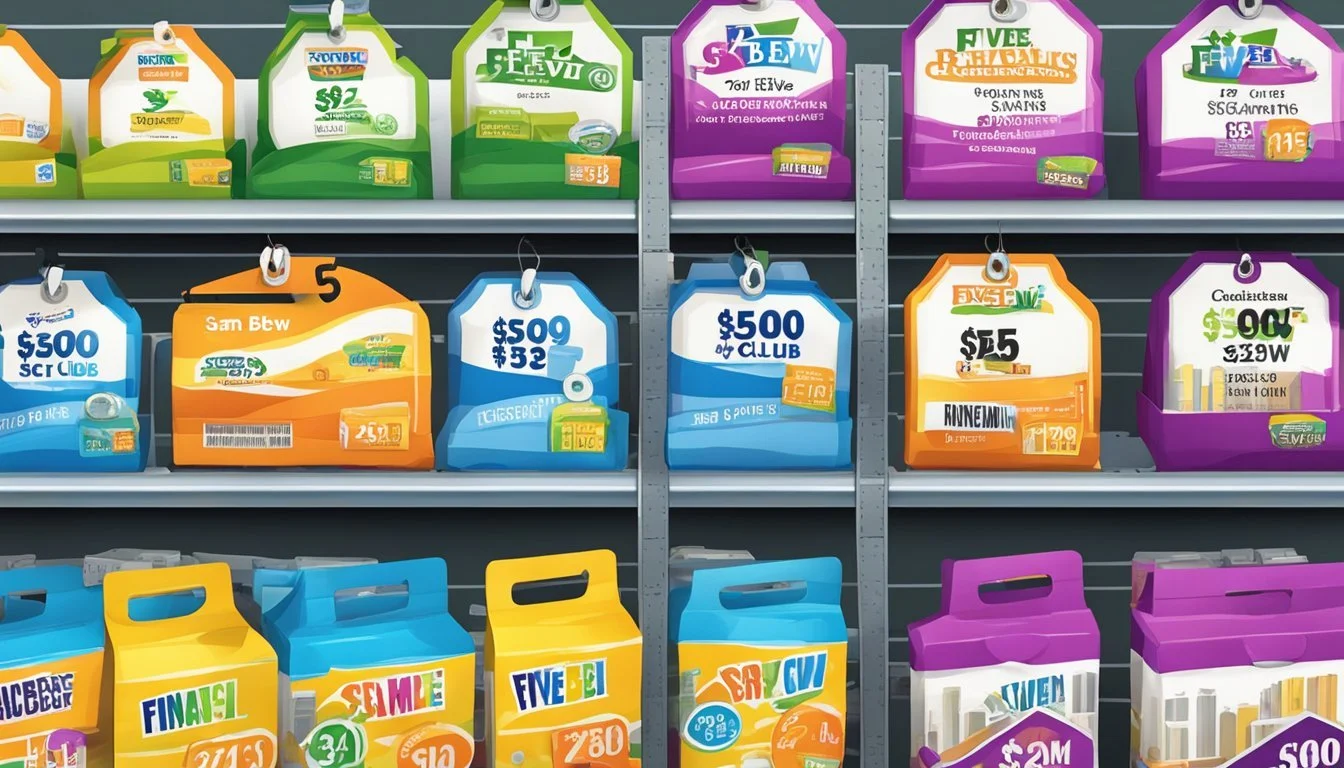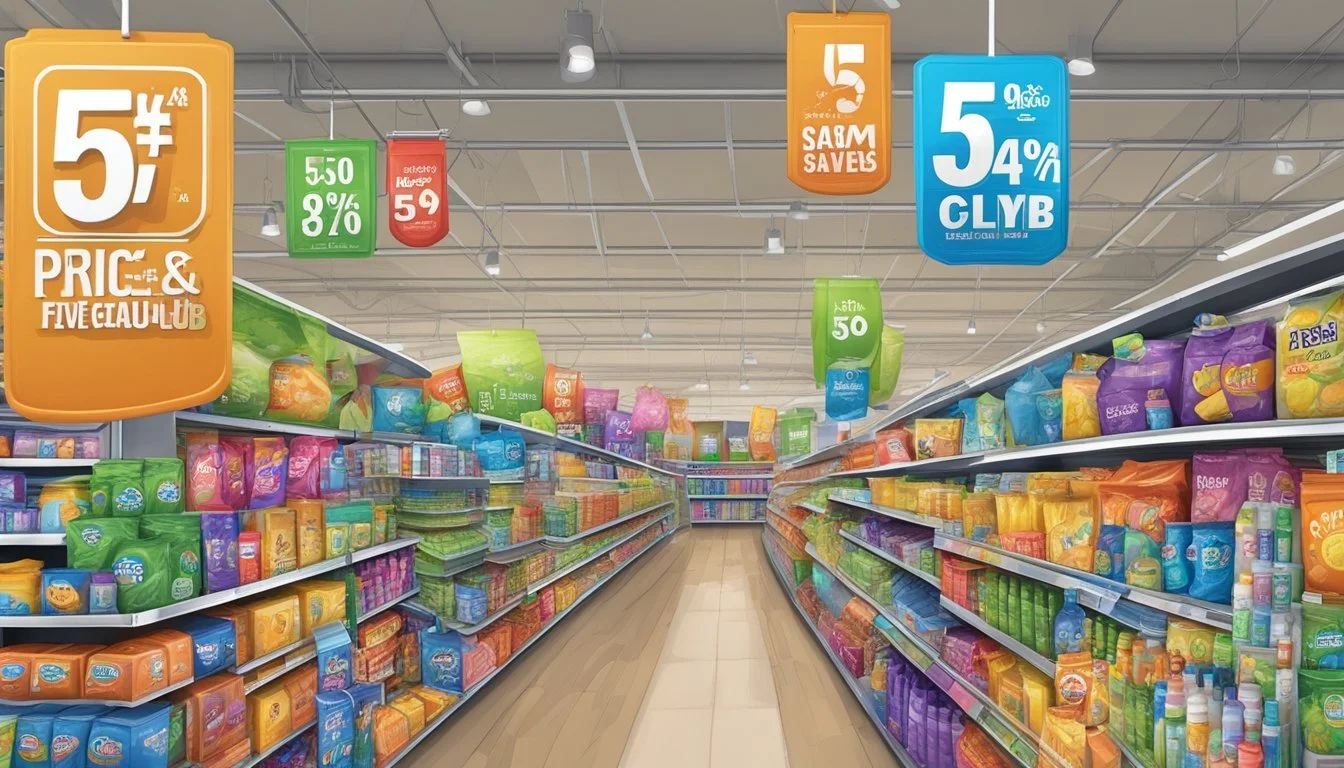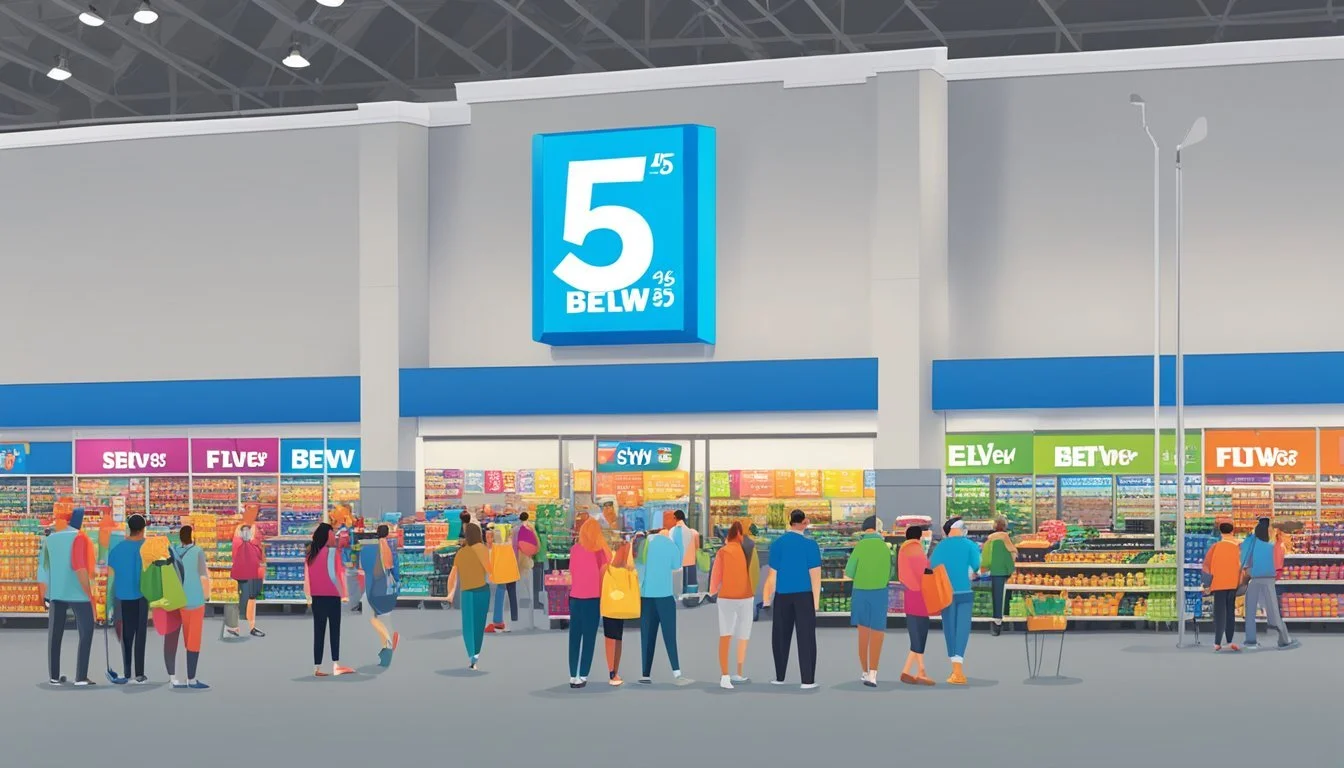Is Five Below Cheaper Than Sam's Club?
A Price Comparison Analysis
Five Below and Sam's Club are popular retailers known for offering affordable products. While both stores aim to provide value to customers, they operate with different business models and target distinct consumer needs.
Sam's Club is generally cheaper than Five Below for most comparable items due to its bulk purchasing model and membership structure. Sam's Club focuses on selling larger quantities at discounted rates, allowing customers to save money on per-unit costs. Five Below, on the other hand, specializes in selling a variety of items priced at $5 or less.
The price comparison between these two stores largely depends on individual shopping habits and specific product needs. Sam's Club may offer better deals on household essentials and groceries, while Five Below can be more cost-effective for small, trendy items or occasional purchases.
Understanding Five Below and Sam's Club
Five Below and Sam's Club operate with distinct business models and pricing strategies. Their product ranges and target customers differ significantly, impacting how shoppers can save money at each retailer.
Five Below's Business Model and Pricing Strategy
Five Below focuses on selling trendy products at $5 or less. The company targets teens, tweens, and bargain-seeking adults with a constantly rotating inventory of toys, tech accessories, home decor, and more.
Five Below keeps prices low by:
Sourcing products directly from manufacturers
Offering limited-time deals
Maintaining smaller store footprints
Focusing on high-volume, low-margin sales
The retailer's strategy allows customers to purchase impulse items and gifts without breaking the bank.
Sam's Club Overview and Membership Model
Sam's Club operates as a membership-based warehouse club. Shoppers pay an annual fee to access bulk quantities of products at discounted prices.
Sam's Club offers two membership tiers:
Club ($45/year): Basic access to stores and services
Plus ($100/year): Additional perks like free shipping and early shopping hours
The company leverages its buying power to negotiate lower prices from suppliers. These savings are then passed on to members through reduced retail prices.
Comparison of Product Ranges
Five Below and Sam's Club cater to different shopping needs:
Five Below:
Trendy, seasonal items
Small electronics and accessories
Party supplies and gift items
Limited grocery selection
Sam's Club:
Bulk groceries and household essentials
Large electronics and appliances
Furniture and home goods
Automotive services and tires
While Five Below specializes in affordable impulse buys, Sam's Club focuses on helping members save on everyday essentials and big-ticket purchases through bulk pricing.
Pricing Analysis
Five Below and Sam's Club utilize distinct pricing strategies tailored to their business models. Their price points and product offerings cater to different consumer needs and shopping preferences.
Assessment of Average Price Points
Five Below maintains a $5 or less price point for most items, with some products priced up to $10. This pricing strategy appeals to budget-conscious shoppers seeking affordable novelty items and basic essentials. Sam's Club, in contrast, focuses on bulk purchases and membership-based pricing. Their average price points are higher due to larger quantities, but the per-unit cost is often lower.
Five Below's narrow price range simplifies shopping decisions. Sam's Club's pricing structure requires more calculation to determine value, considering package sizes and membership fees.
Cost Comparison of Common Products
When comparing individual items, Five Below generally offers lower absolute prices. However, Sam's Club can be more cost-effective for larger quantities or higher-quality versions of similar products.
Product Five Below Sam's Club Snacks $1 - $5 $5 - $15 (bulk) Electronics $5 - $10 $20 - $100+ Home Decor $1 - $5 $10 - $50+
Sam's Club excels in providing savings on name-brand items and bulk purchases. Five Below's strength lies in offering trendy, low-cost alternatives and impulse buys. The choice between the two depends on specific shopping needs and quantity requirements.
Shopping Experience
The shopping experience at Five Below and Sam's Club differs significantly in terms of store layout, product selection, and overall atmosphere. Each retailer caters to distinct customer needs and preferences.
Store Accessibility and Locations
Five Below stores are typically found in shopping centers and strip malls, making them easily accessible for quick visits. These locations are smaller, usually around 8,000 square feet, allowing for a more intimate shopping experience. Five Below has over 1,000 stores across the United States, primarily in suburban areas.
Sam's Club warehouses are larger, averaging 136,000 square feet. They are often situated in standalone buildings or commercial complexes with ample parking. Sam's Club operates fewer locations, with approximately 600 stores nationwide. This means customers might need to travel farther to reach a Sam's Club.
Sales and Promotional Events
Five Below maintains consistent pricing year-round, with most items priced at $5 or less. The store occasionally runs special promotions, such as "Five Below Days" where select items are discounted even further. New merchandise arrives frequently, encouraging repeat visits to discover fresh finds.
Sam's Club offers a variety of sales events throughout the year. Members receive access to exclusive deals during seasonal promotions and holiday sales. The retailer also provides instant savings on select items, which are automatically applied at checkout. Sam's Club's "Shocking Values" program features limited-time, deeply discounted items available online and in-store.
Financial Considerations for Shoppers
When comparing Five Below and Sam's Club, shoppers must weigh various financial factors. These include membership costs, potential long-term savings, and the impact of inflation on purchasing decisions.
Membership Fees and Benefits Analysis
Sam's Club charges an annual membership fee, while Five Below does not require any membership. Sam's Club offers two tiers: a $45 basic membership and a higher-tier Plus membership. The Plus membership provides additional perks like cash back rewards on purchases. Five Below, in contrast, allows anyone to shop without fees.
Sam's Club members gain access to bulk pricing and exclusive deals. This can lead to significant savings on larger purchases. Five Below maintains a consistent low-price model across all items, typically $5 or less.
For frequent shoppers, Sam's Club's membership benefits may outweigh the annual fee. Occasional buyers might find Five Below's no-fee approach more appealing.
Analysis of Long-Term Savings
Sam's Club's bulk purchasing model can yield substantial long-term savings for households. Buying in larger quantities often results in a lower per-unit cost. This is particularly beneficial for non-perishable goods and frequently used items.
Five Below's fixed price point limits potential savings on individual items. However, it offers predictable costs and eliminates the need to store large quantities. This can be advantageous for those with limited storage space or who prefer to buy items as needed.
Sam's Club's cash back rewards for Plus members can accumulate over time, providing additional savings. Five Below does not offer a rewards program, but its consistently low prices may result in immediate savings on each purchase.
Effects of Inflation on Shopping Decisions
Inflation affects purchasing power at both Sam's Club and Five Below. Sam's Club's bulk pricing model can help mitigate the impact of inflation by allowing customers to stock up on items at current prices. This strategy can be particularly effective for non-perishable goods.
Five Below has historically maintained its $5-or-less price point. However, inflationary pressures may lead to changes in product quality, size, or availability to maintain this pricing structure. Shoppers may need to adjust expectations or seek alternatives for certain items.
Sam's Club's membership model allows for price adjustments to offset inflation, potentially leading to gradual increases in membership fees or product prices. Five Below may need to introduce higher price points or reduce product offerings to adapt to rising costs.
Additional Services and Perks
Sam's Club and Five Below offer different perks beyond their product selections. Sam's Club provides broader member benefits, while Five Below focuses on low prices for trendy items.
Gas Savings and Travel Benefits
Sam's Club members can access discounted fuel at select locations. The Scan & Go app allows contactless payment at the pump. Members save an average of $0.05 per gallon compared to local prices.
Sam's Club partners with rental car companies to offer discounts up to 25% off. Members receive special rates on hotels, resorts, and vacation packages through the Sam's Club Travel program.
Five Below does not offer gas or travel-related perks, as it is not a warehouse club.
Exclusive Member-Only Offers
Sam's Club provides early access to sales and events for its members. Special promotions like Instant Savings offer additional discounts on select items throughout the store.
Members can take advantage of services like optical exams, hearing aid consultations, and tire installation at discounted rates. The Sam's Club credit card offers cash back on purchases.
Five Below occasionally runs sales events but does not have a membership program or exclusive offers. Its focus is on maintaining consistently low prices across all items in the store.
Comparative Analysis of Shopping in Bulk
Bulk purchasing and small-scale shopping offer distinct advantages for consumers. The choice between warehouse clubs and discount stores like Five Below depends on individual needs and shopping habits.
Advantages of Bulk Purchases at Warehouse Clubs
Warehouse stores like Sam's Club excel in offering significant savings on bulk items. Members can purchase large quantities of products at reduced per-unit costs. This approach is particularly beneficial for non-perishable goods, household essentials, and frequently used items.
Sam's Club provides a wide range of products in bulk, from groceries to electronics. The savings can be substantial for families or businesses with high consumption rates. Buying in bulk also reduces the frequency of shopping trips, saving time and transportation costs.
However, bulk purchases require more storage space and a larger upfront investment. Some items may expire before use if not consumed quickly enough.
Five Below and Small-Scale Purchases
Five Below operates on a different model, focusing on smaller, more affordable items. This store caters to shoppers looking for inexpensive products without the commitment of bulk buying.
Five Below offers a variety of items priced at $5 or less, including:
Toys and games
Home decor
Beauty products
Snacks and candy
This approach appeals to budget-conscious consumers, impulse buyers, and those with limited storage space. Five Below's model allows for more frequent, smaller purchases, which can be advantageous for trying new products or managing tight budgets.
The trade-off is that Five Below doesn't offer the same potential for bulk savings as warehouse clubs. Items are sold in smaller quantities, which may result in higher per-unit costs for some products.
Brand and Company Profiles
Five Below and Sam's Club have distinct histories and business models, with Sam's Club benefiting from its connection to retail giant Walmart. Both companies have experienced significant growth but target different customer segments and product categories.
Comparing Company Histories and Growth
Five Below was founded in 2002 by David Schlessinger and Tom Vellios. The company focuses on selling trendy products priced at $5 or less, primarily targeting teens and pre-teens. Five Below has expanded rapidly, growing from a single store in Pennsylvania to over 1,000 locations across the United States.
Sam's Club, established in 1983, is a membership-based warehouse club. It offers bulk products at discounted prices to both individual and business customers. Sam's Club has grown to over 600 locations in the U.S., with additional stores internationally.
Both companies have shown strong financial performance. Five Below has consistently reported double-digit revenue growth, while Sam's Club generates billions in annual sales as part of Walmart's portfolio.
Impact of Walmart's Ownership of Sam's Club
Walmart's acquisition of Sam's Club in 1990 has significantly influenced the warehouse club's operations and market position. This ownership provides Sam's Club with several advantages:
Purchasing power: Leveraging Walmart's massive scale allows Sam's Club to negotiate better prices with suppliers.
Distribution network: Access to Walmart's sophisticated logistics infrastructure enhances Sam's Club's efficiency.
Technology investments: Sam's Club benefits from Walmart's investments in e-commerce and digital innovations.
Brand recognition: Association with Walmart lends credibility and familiarity to Sam's Club among consumers.
These factors have helped Sam's Club compete effectively against other warehouse clubs and retailers, including Five Below in certain product categories.
Conclusion
Five Below and Sam's Club cater to different shopping needs and budgets. Five Below offers a wide variety of items at $5 or less, making it an attractive option for small, inexpensive purchases.
Sam's Club, on the other hand, focuses on bulk purchases and membership benefits. While individual items may cost more upfront, buying in larger quantities often results in lower per-unit prices.
For everyday, low-cost items, Five Below can be cheaper. However, Sam's Club may provide better value for larger household purchases and grocery staples.
The choice between the two depends on individual shopping habits and needs. Families or businesses might find greater savings at Sam's Club, while budget-conscious shoppers looking for affordable novelties may prefer Five Below.
Both stores offer unique advantages. Savvy consumers can maximize savings by strategically shopping at both, depending on their specific requirements and the items they need to purchase.









